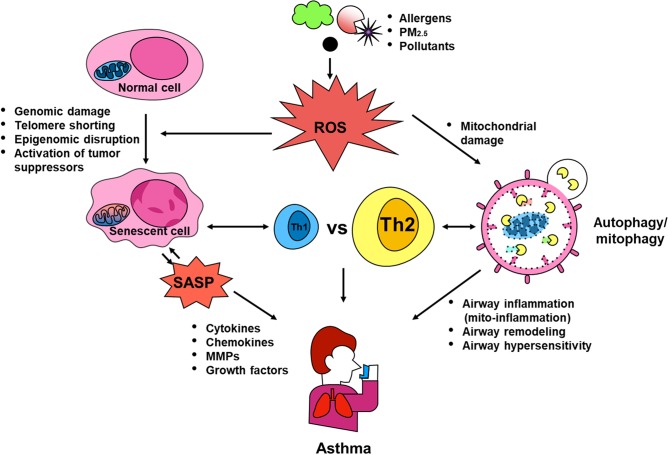Figure 4.
Contribution of autophagy, mitophagy, and senescence to asthma. Environmental triggers, such as environmental pollutants and allergens, can induce excessive ROS generation, which serve as “signaling molecules” modulating the process of autophagic cycle through activating signaling molecules and autophagy, thereby leading to the major phenotypic changes of asthma, including airway inflammation, airway remodeling, and airway hyper-responsiveness. These elevated ROS levels can also induce mitochondrial damage and mitophagy, thereby leading to the mitochondria-induced inflammation (mito-inflammation). Oxidative stress can cause DNA damage, telomere shortening, and epigenomic disruption, which convert normal cells into senescent cells, leading to secretion of SASP. SASP can regulate sensecent cells and induce airway inflammation and remodeling thought the secretion of cytokines, chemokines, MMPs, and growth factors. Additionally, Th1 or Th2 cytokines may induce autophagy/mitophagy/senescence, and in turn, these may also regulate the balance of Th1 and Th2 responses in asthma.

